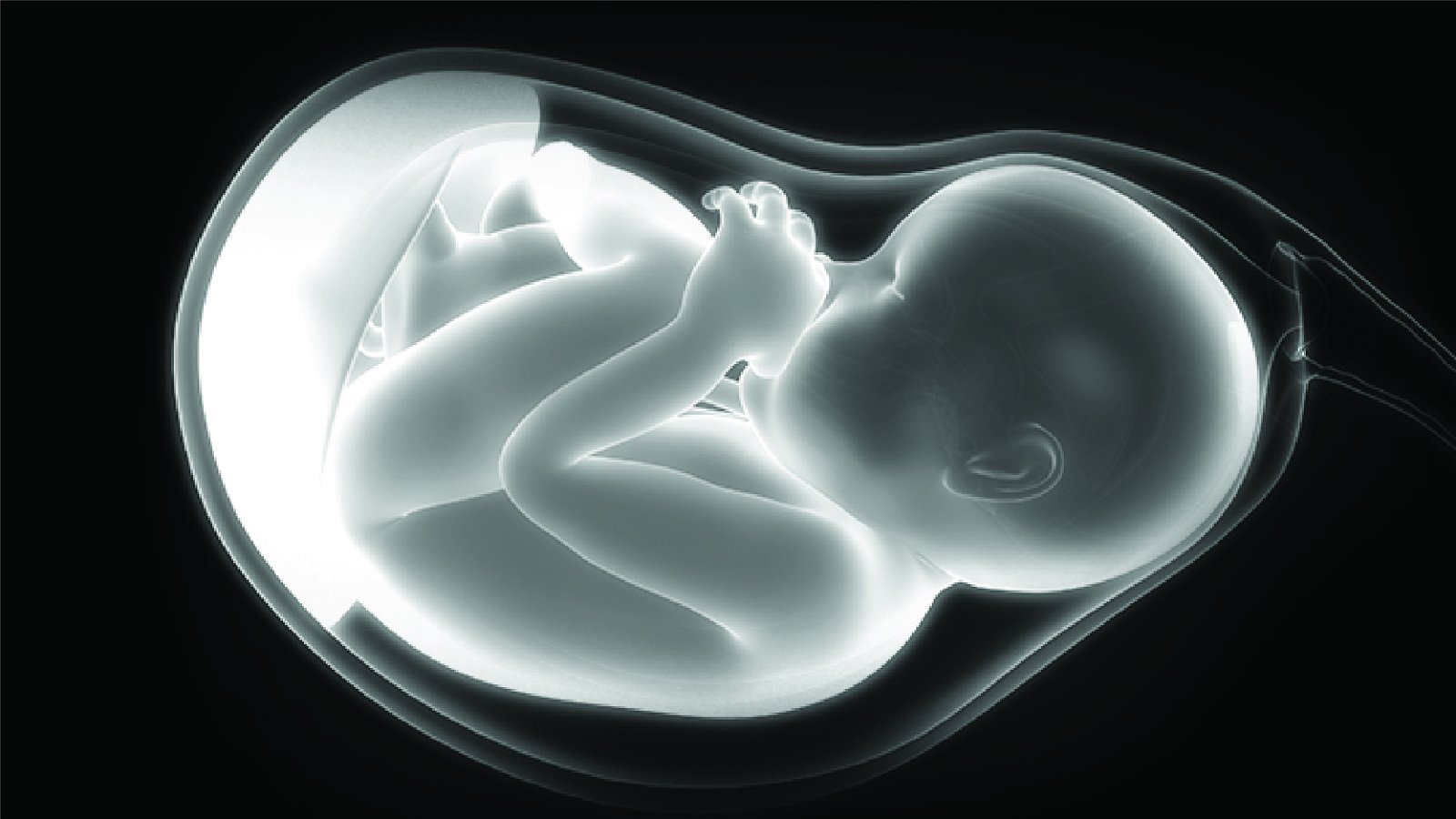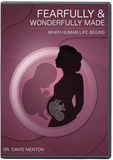Is Human Life Valuable?
The unique value of human beings is based on the image of God.
From the time a woman finds out she is expecting to when family gathers around a beloved elder’s deathbed, almost everyone acts like there is something special about human life. A new life is something to be celebrated, and the end of a life is a matter for mourning, especially if that life is prematurely cut short by accident, illness, or murder. But even the peaceful death of someone who has lived out an unusually long life is mourned as if it is not natural for people to die.
Secularists insist that human beings are only one node on the vast tree of life, related by a common ancestor to orchids, katydids, and crocodiles. The first living thing, they assert, arose from nonliving matter by incomprehensible chance. In the best-case scenario of a secular worldview, humans are no more valuable than other living things. In fact, some secular ethicists such as Peter Singer claim that some intelligent animals, like pigs and crows, may have more value than disabled humans!1
Why Is Human Life Valuable?
Christians base our thinking on what God’s Word teaches regarding human beings, and the Genesis creation account emphasizes the unique role and value humans have.
Christians base our thinking on what God’s Word teaches regarding human beings, and the Genesis creation account emphasizes the unique role and value humans have. During creation week, God formed and filled the earth a little more each day. After he had made the earth to be a habitable place and filled it with plants, fish, birds, and land animals, the creation account came to a climax. We are given a glimpse into the intra-trinitarian deliberation.
Let us make man in our image, after our likeness. And let them have dominion over the fish of the sea and over the birds of the heavens and over the livestock and over all the earth and over every creeping thing that creeps on the earth. (Genesis 1:26)
While human beings share many structural similarities with other mammals, such as being vertebrates with body hair who give birth to live young, we were created separately from the land animals, and God specifically says that human beings, in contrast to all other creatures, are in God’s image and likeness. People debate over what this specifically means, but generally it means that we’re like God in some ways (we call the attributes of God we can possess in some way—like love—his communicable attributes, in contrast to the attributes we can’t have—like omnipotence—which are incommunicable), and we represent him in the creation by stewarding it. When Adam sinned, God’s image in us was marred but not completely wiped out. Human beings are thus sinfully distorted images of God.
After the global flood, God instituted the death penalty for murder.
And for your lifeblood I will require a reckoning: from every beast I will require it and from man. From his fellow man I will require a reckoning for the life of man. Whoever sheds the blood of man, by man shall his blood be shed, for God made man in his own image. (Genesis 9:5–6)
So, in a Christian worldview, mankind has more value than manatees, not because we’re more clever or have opposable thumbs, but because we’re created in God’s image.
When Is a Human Life Valuable?
You’ll be hard-pressed to find an academic who is eager to have his own utilitarian view of the lives of the disabled or otherwise “lesser” humans applied to himself. Some people claim that life in the womb, particularly during the first trimester before all the body systems have formed and before the new baby “looks human,”2 has less value because many early pregnancies end in miscarriage, so the woman should get to make the decision whether or not to continue with the pregnancy. But the fact that some very young human beings die unavoidably does not make it acceptable to murder others.
Many laws that restrict abortion have exceptions for rape and incest, allowing the mother to kill her unborn child if it came about through terrible circumstances. Rapists should be punished far more harshly than they often are, but any child resulting from rape is an innocent victim as much as his or her mother. The solution to the violence that has been done to the mother is not to do more violence to her baby.
Other people claim that if a child will be disabled, it is better off to have an abortion and try again for a healthy baby. People who use this argument always use the most extreme examples, but in reality, this could be for very treatable conditions like a cleft palate or club feet. Notably, most babies diagnosed with Down Syndrome in the womb are murdered because of it. Caring for disabled family members can be a sacrifice but also a blessing. If a family is really not able or willing to care for a disabled child, there are long wait lists of families who would love to care for a baby with significant medical complications. There truly is no such thing as an unwanted baby. But even if that were not the case, it would not be acceptable to murder a human being for being disabled.
After a baby has successfully exited the womb, he or she generally has more legal protection. But with assisted suicide gaining popularity in many parts of the world, killing a person who is disabled or even depressed is becoming a more and more attractive option to many. Especially when a person has a terminal illness or is old and has diminished capabilities, many can’t see the point in letting them continue living, particularly if it will be expensive or inconvenient.
If we look at life from a utilitarian standpoint—that our worth comes from what we can contribute to the world—disabled and elderly people would have less value. But from a biblical perspective, God shows special care to the most vulnerable and specially commands his people to care for them. So from fertilization to natural death, we must protect and uphold the value of life, especially that of the vulnerable, disabled, and elderly.
Jesus: The Image of God
If we really want to understand what the image of God is, we need to look at the Person who most fully represented that—Jesus. Jesus is God incarnate, the second Person of the Trinity, and when he became incarnate as a perfect man, he became the perfect image of God (2 Corinthians 4:4)—the last Adam. Christians often and understandably defend the deity of Christ, but it is equally important to understand that Jesus is also fully and truly human. In his humanity, Jesus shows us what the perfect image of God looks like, and he lived a perfectly righteous human life. This means that he attained a specifically human righteousness that could be applied to us for our salvation in addition to the divine righteousness that he had from eternity. Jesus was not lacking in any type of righteousness, but his divine righteousness could not be applied to non-divine human beings. Thus his perfect human life was necessary for our salvation, not to add anything necessary to Jesus. And because Jesus is fully God, it would have been impossible for him to be anything less than completely righteous, whether we are considering his divine righteousness or his human righteousness.
During Jesus’ earthly life and ministry, he modeled a perfectly righteous life in the midst of a fallen world and sinful people. His resurrection foreshadows the type of resurrection we will have. The New Testament is clear that Jesus’ resurrection was a human resurrection of the same sort we will have.
The Image of God in Eternity
One aspect of the image of God in us is that we are eternal beings. We are not eternal in the same way as God. God is outside of time and had no beginning or end, while human beings, as creatures, are time-bound and have a beginning but no end. When a believer dies, he or she goes immediately into the presence of Christ to await the resurrection of the dead, which will happen at the time of Jesus’ second coming. The resurrection body we will receive will be like Christ’s and will never age, sicken, or die. It will be perfectly suitable for our new existence in the new heavens and earth as we worship and serve our Creator. We will be restored to the full image of God we were always meant to have.
While believers look forward to an eternity of unimaginable joy, we also have to examine what will happen to those who fail to trust in Christ. At the time of their death, they will enter a place of torment to await the final judgment. They will also be raised on the last day, but this existence is never called “life.” Their bodies are also indestructible, but instead of worship and service, they will be cut off from God and all the blessings of God, eternally tormented, and without hope of salvation.
No one likes to contemplate the reality and horror of hell, but we all likely know people who are headed there. If you are horrified by the thought of someone you love ending up in an eternity of torment, the best thing you can do is pray unceasingly for them and share the gospel at every opportunity. Even on their deathbed, God delights to save anyone who will call on Jesus.
Our Response
As we interact with other people, we should be conscious that they are fellow image-bearers.
As we interact with other people, we should be conscious that they are fellow image-bearers. This means that we will treat vulnerable people with extra care, we will proclaim the gospel to unbelievers so that they might avoid an eternal hell, and we will fight against ideologies that diminish the value of anyone who bears the image of God.
This also means that we have to respect the humanity and image-bearing capacity of our opponents and cannot stoop to some of their tactics. We can even use their status as image-bearers to confront them when they can’t help but make statements that are inconsistent with their materialistic worldview. Ultimately, our goal with our opponents is not just to win the argument but to win over our opponent with the gospel.
Footnotes
- Wesley J. Smith, “Peter Singer Thinks Intellectually Disabled Less Valuable than Pigs,” February 25, 2017, https://www.nationalreview.com/corner/peter-singer-thinks-intellectually-disabled-less-pigs/.
- In fact, a six-week-old embryo looks how a human being should look at six weeks’ gestation—he or she simply does not look like a more fully developed human being, such as how a toddler is different from an adult.
Recommended Resources

Answers in Genesis is an apologetics ministry, dedicated to helping Christians defend their faith and proclaim the good news of Jesus Christ.
- Customer Service 800.778.3390
- Available Monday–Friday | 9 AM–5 PM ET
- © 2025 Answers in Genesis





